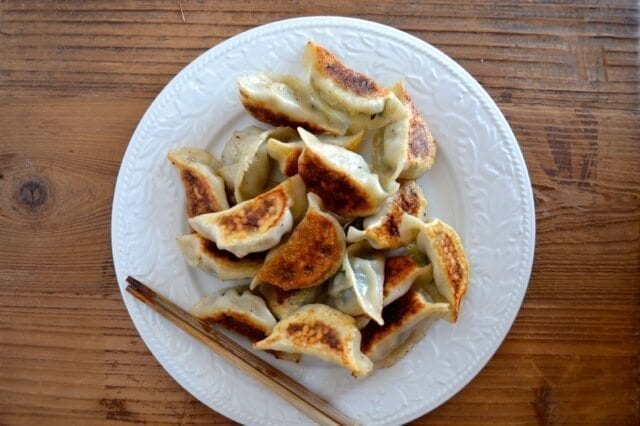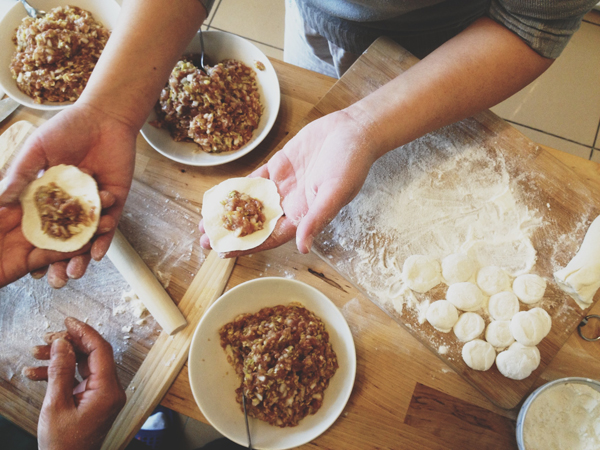Jiaozi
饺子, 餃子
Jiaozi are a type of Chinese dumpling. Jiaozi typically consist of a ground meat or vegetable filling wrapped into a thinly rolled piece of dough, which is then sealed by pressing the edges together. Jiaozi can be boiled (shuǐjiǎo), steamed (zhēngjiǎo), pan-fried (jiānjiǎo), or deep-fried (zhàjiǎo), and are traditionally served with a black vinegar and sesame oil dip. They can also be served in a soup (tāng jiǎo). Jiaozi have great cultural significance within China. Jiaozi are one of the major dishes eaten during the Chinese New Year throughout northern China and eaten all year round in the northern provinces. Their resemblance to the gold and silver ingots (sycee) used in Imperial China has meant that they symbolize wealth and good fortune.
Source: Wikipedia



